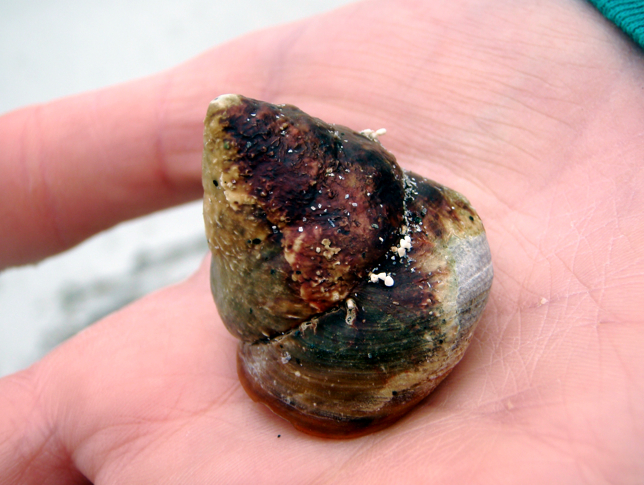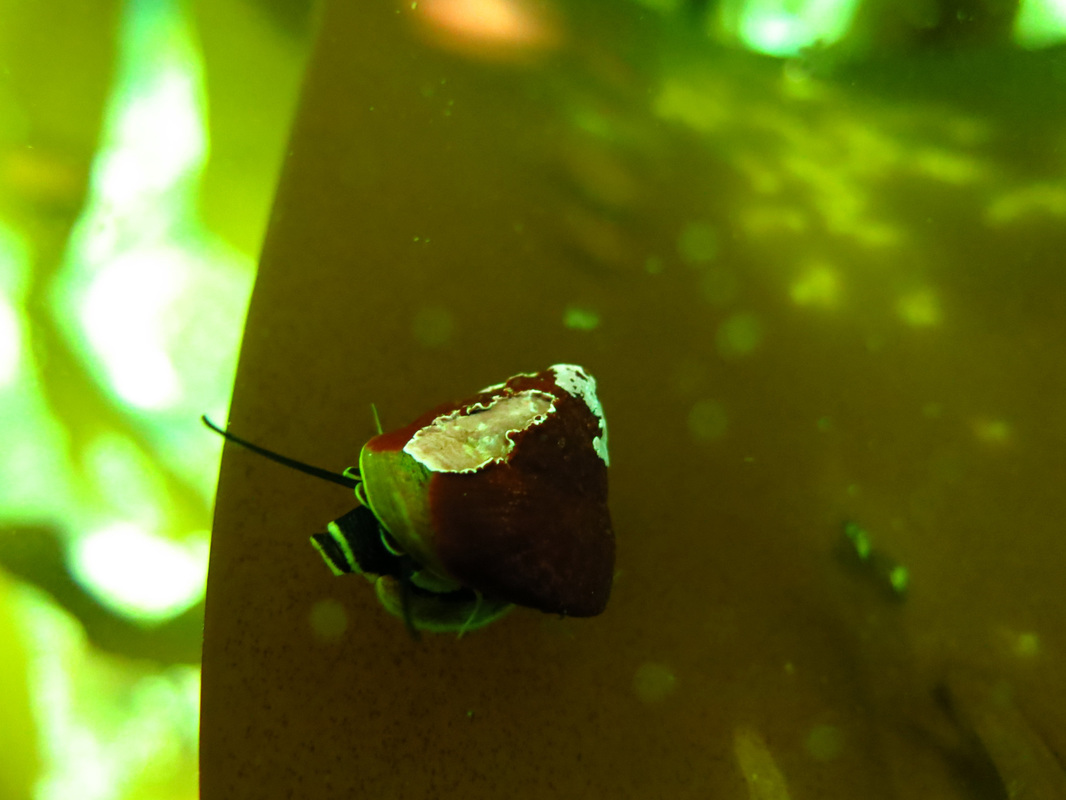Dusky turban, dusky tegula, brown turban, northern brown turban • Tegula pulligo, Tegula pulligo taylori, Promartynia pulligo
Identification
The dusky turban often has algae growing on its shell, giving it a mottled, rusted appearance. Beneath this layer of growth, the dusky turban's shell is smooth and has swirl pattern with different shades of brown, brown-grey, and white. It has a triangular-shaped spire consisting of a few large, rounded whorls, and an open umbilicus. The shell can grow to about 4.5 cm tall. The snail itself is black with faint pale lines.
Habitat & Range
This snail inhabits shallow rocky intertidal areas to a depth of 3 m. It is found on exposed shorelines from southern Alaska to northern Mexico.
Similar Species
The brown turban snail (Chlorostoma brunnea) has a similar shape, but is a more uniform brown colour, and is generally not found north of Oregon. The red turban (Pomaulax gibberosus) has a distinctive bumpy, ridged texture and is generally larger. The dusky turban has a similar range as the black turban (Tegula funebralis). and both are found on exposed shores. They are quite straightforward to differentiate, though: the black turban has a more globular shape with a rounded top, which is usually worn down to a pearly white layer.
The dusky turban often has algae growing on its shell, giving it a mottled, rusted appearance. Beneath this layer of growth, the dusky turban's shell is smooth and has swirl pattern with different shades of brown, brown-grey, and white. It has a triangular-shaped spire consisting of a few large, rounded whorls, and an open umbilicus. The shell can grow to about 4.5 cm tall. The snail itself is black with faint pale lines.
Habitat & Range
This snail inhabits shallow rocky intertidal areas to a depth of 3 m. It is found on exposed shorelines from southern Alaska to northern Mexico.
Similar Species
The brown turban snail (Chlorostoma brunnea) has a similar shape, but is a more uniform brown colour, and is generally not found north of Oregon. The red turban (Pomaulax gibberosus) has a distinctive bumpy, ridged texture and is generally larger. The dusky turban has a similar range as the black turban (Tegula funebralis). and both are found on exposed shores. They are quite straightforward to differentiate, though: the black turban has a more globular shape with a rounded top, which is usually worn down to a pearly white layer.
References
Lamb, A., and Hanby, B. (2005). Marine Life of the Pacific Northwest. Madeira Park, BC: Harbour Publishing. P. 234
Promartynia pulligo  (Gmelin, 1791). Seanet Subtidal. Stanford University. Accessed 05/08/2013.
Authors and editors of page
Kelly Fretwell and Brian Starzomski (2013).
Lamb, A., and Hanby, B. (2005). Marine Life of the Pacific Northwest. Madeira Park, BC: Harbour Publishing. P. 234
Promartynia pulligo  (Gmelin, 1791). Seanet Subtidal. Stanford University. Accessed 05/08/2013.
Authors and editors of page
Kelly Fretwell and Brian Starzomski (2013).






